I thought it would be nice to switch from gasoline to electric auxiliary power for our Picnic Cat and after a little internet research revealed that customers found the gearbox on the Torqeedo motors noisy and the ePropulsion's direct drive quieter, I ordered an ePropulsion Spirit. That was in July. It arrived at last in the beginning of November and, skipping right to the end of the story, I was right! It is nice! I did learn a few things along the way...
The first question to answer when ordering one of these is: which shaft length do you want? This should be an easy question with a standard answer. It's not.
There's a global standard in shaft lengths. All my life, a "short" shaft small outboard means the shaft is 15 inches long. A long shaft is 20 inches and an extra long is 25 inches. On a sailboat, you generally want a long or extra long shaft.
ePropulsion outboards come in three shaft lengths: extra short, short, and long. The salesman told me that an ePropulsion "short" is equivalent to any other manufacturer's "long" shaft engine, so that's what I ordered. The picture at right is the Tohatsu 5 hp with 20 inch shaft that came with our Picnic Cat. As the tape measure shows, the propeller shaft is about a foot off the concrete floor. The ePropulsion prop shaft should be at the same height, one would think.
Without moving the boat or the engine bracket, I swapped the Tohatsu for the ePropulsion and made the same measurement. The prop shaft sits about 15 inches above the concrete floor, so that's somewhere between a standard 15 inch shaft and a 20 inch one. Testing on the water demonstrated that the ePropulsion is deep enough to avoid sucking air from the surface in most conditions, but not all. Steep chop resulted in pitching that brought the prop to the surface. It's fine for my purposes, but I would recommend that people who are going to power a sailboat into steep chop get the ePropulsion "long" shaft version.
Before trying it out on the sailboat, I decided to make sure the motor worked and evaluate its performance using an old friend. This is a 1958 Feathercraft Cartopper 12 that my father bought new, so it has been in the family my whole life. I've operated it with a wide variety of outboards and know what to expect from it and it's easy to launch it into the creek using my golf cart, so the ancient boat got the modern powerplant, at least briefly.
The ePropulsion Spirit is supposed to be equivalent in power to a 3 hp gasoline outboard. It seemed pretty close to me. The boat went 5 knots at full power with two men aboard, which is about what a 3 hp should do. I was pleased with how quiet the motor is, especially at lower power settings. It passed this test and so it was time to try it on the Picnic Cat.
The motor fits on the bracket OK but the tiller is pretty long and it does not tilt up and back like most do. It pulls out and folds down. Because the boom gallows is in the way, it's necessary to rotate the motor all the way around backward while tilting it to get it into this position, then fold the tiller down.
The previous picture makes it a bit hard to tell but this shot of us departing shows that the tilted motor is well clear of the water and shouldn't drag even with the boat heeled over in that direction.
Another shot taken by my drone. The head of the Sailing Center took a visitor for a little introductory sail and she loved it.
We had the perfect day to test one of the things I wanted the ePropulsion motor to do. I put rod holders on the boom gallows because we like to fish but a sailboat in light air is not great for trolling. When the wind slacks off or when you tack the boat, it can slow down enough that the lure drops to the bottom and gets snagged or fouled with weeds. We had just that kind of wind, about 5-8 knots most of the time.
Just a little added power from the motor did a great job of keeping the boat moving through those lulls. If the boat is quiet, the faint hum of the motor is barely detectable. This is just the result I wanted!
I had been a bit worried that the shaft length would not be enough to prevent cavitation (actually ventilation, but old habits die hard). I got the boat moving fast then quickly shifted to reverse and gave it a lot of power. This did result in it slurping a bit of air from the surface for a moment but it was easily controllable so it passed the panic stop test. We had a good sized fishing boat go nearby in the harbor, throwing a pretty steep wake in the shallow water. The pitching did result in some cavitation and the chop slowed the boat way down. If powering continuously into that kind of chop, I'd want the long shaft version.
Overall, I'm very happy with the motor and hope it lasts a long time. My oldest outboard at the moment is a 1986 Evinrude 15. I'm not sure I can hope for that many years out of this one, but we'll see!
A little video from my drone flight:
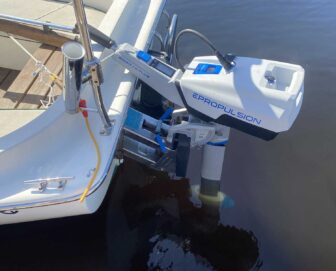
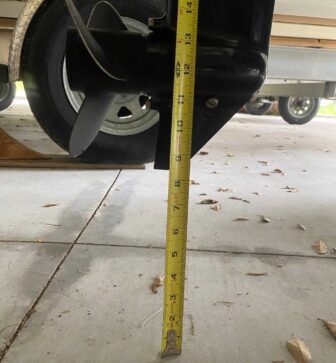
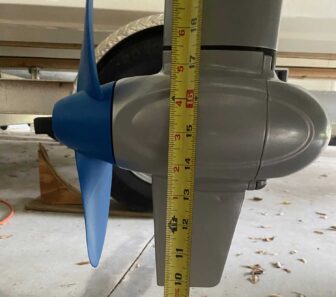
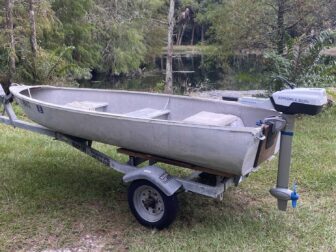
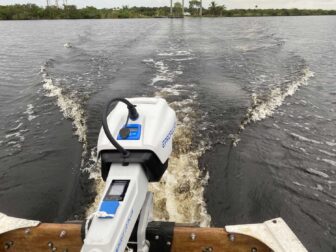
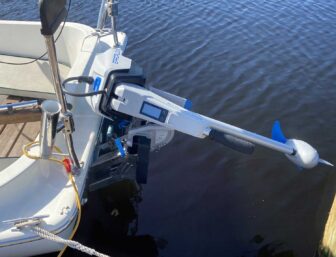
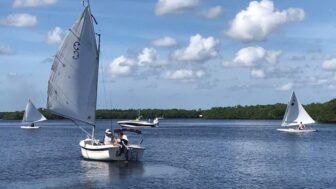
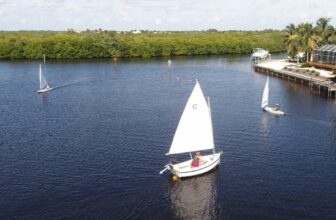
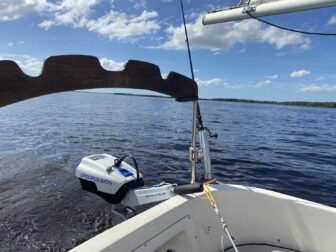
Leave a Reply
You must be logged in to post a comment.